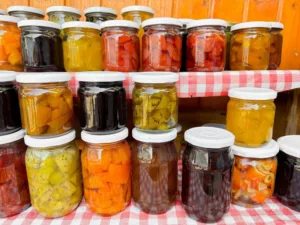The design of a wine bottle is far more than a simple container; it is an artistic expression of a region’s heritage, a winery’s identity, and the craftsmanship behind the wine itself. While wine lovers often focus on taste, the visual and tactile experience of a wine bottle can be just as memorable. This blog explores the most famous wine bottle designs in the world, from their historical roots to modern innovations, and how they impact the perception of wine globally.
Whether you’re a casual enthusiast or a seasoned collector, understanding iconic wine bottle designs enhances your appreciation of wine as an art form and cultural symbol.

Table of Contents
1.The Evolution of Wine Bottle Designs
A Brief History of Wine Bottles
The journey of wine bottles began long before the glass containers we recognize today.
Ancient Times:
Early civilizations like the Egyptians and Greeks stored wine in amphoras—large clay vessels sealed with wax. Amphoras were practical for bulk storage but not ideal for preservation.Glassmaking Revolution:
By the 17th century, English glassblowers refined techniques to create sturdy glass bottles. These bottles had rounded shapes and short necks, primarily designed for practicality rather than aesthetics.Modern Standardization:
The 19th century introduced uniform bottle sizes (750 ml), shapes (Bordeaux, Burgundy), and materials (thicker glass for sparkling wines).
“Wine bottles evolved not just for functionality but to signify quality and origin.” – Dr. Richard Devers, Wine Historian
Why Bottle Design Matters in the Wine Industry
Wine bottle designs are vital for practical, marketing, and environmental reasons:
Practicality:
- Protects wine from light and oxygen exposure.
- Facilitates ease of storage and pouring.
Marketing Appeal:
- Consumers often associate unique bottle designs with premium quality.
- Memorable designs foster brand loyalty.
Sustainability:
- Eco-friendly materials and designs are increasingly popular to reduce carbon footprints.
Key Elements of Iconic Bottle Designs
The most famous wine bottle designs share these characteristics:
| Element | Description | Examples |
|---|---|---|
| Shape | Bordeaux (straight-sided), Burgundy (sloped shoulders), Champagne (thick glass). | Bordeaux reds, Chardonnay, Prosecco |
| Material | Thick glass for durability, colors like green and amber for UV protection. | Champagne, Riesling |
| Decorative Features | Embossing, intricate labels, creative closures. | Château Margaux, Dom Pérignon |

2.The Most Famous Wine Bottle Designs in the World
Iconic Wine Bottle Designs by Region
France:
- Bordeaux Bottle: Straight-sided with tall shoulders, ideal for reds.
- Burgundy Bottle: Sloped shoulders symbolize elegance, popular for whites.
- Champagne Bottle: Thick glass and deep punts handle pressure from carbonation.
Italy:
- Chianti’s Fiasco: Traditional round bottle with straw casing, symbolizing rustic charm.
USA and Australia:
- Modern interpretations of Bordeaux and Burgundy bottles with creative labeling.
Designer and Luxury Wine Bottles
Luxury wines elevate bottle design to an art form:
Art-Inspired Designs:
Château Mouton Rothschild collaborates with artists like Picasso for label designs.Handcrafted Bottles:
Lalique bottles for rare vintages feature exquisite etching and sculptural elements.
Modern Innovations in Wine Bottle Design
The future of wine bottles includes:
- Flat Bottles: Designed for eco-friendly shipping.
- Minimalist Labels: Clean, modern aesthetics that focus on typography.
- Creative Closures: Magnetic stoppers and resealable corks.

3.The Cultural and Aesthetic Significance of Wine Bottle Designs
Wine Bottle Designs as Cultural Symbols
Bottle designs often reflect the winemaker’s heritage and region:
- Burgundy’s sloped bottles represent centuries-old traditions.
- The Chianti fiasco signifies rustic Italian charm.
The Psychology Behind Wine Packaging
- Perceived Value: Heavier bottles are often seen as more premium.
- Shape Preferences: Consumers associate tall bottles with elegance and quality.
4.Choosing the Right Wine Bottle for Your Collection
How to Identify Authentic Wine Bottle Designs
- Look for embossed logos and seals indicating authenticity.
- Study the history of famous bottles to recognize replicas.
Preserving and Displaying Iconic Wine Bottles
- Use UV-resistant cabinets for protection.
- Invest in creative displays like illuminated racks to showcase artistry.
Conclusion
From historical amphoras to modern eco-friendly designs, wine bottle designs continue to evolve, blending functionality with artistry. Understanding the most famous wine bottle designs in the world enriches your appreciation of wine culture. Whether you’re a collector or casual drinker, these designs offer a deeper connection to the stories behind every sip.
What’s your favorite wine bottle design? Share your thoughts below!


